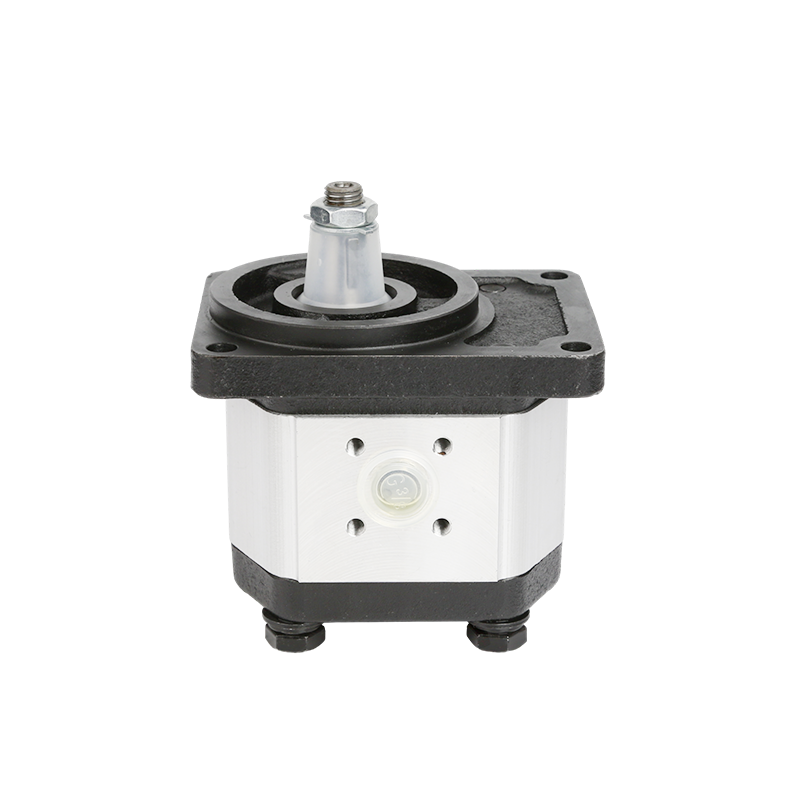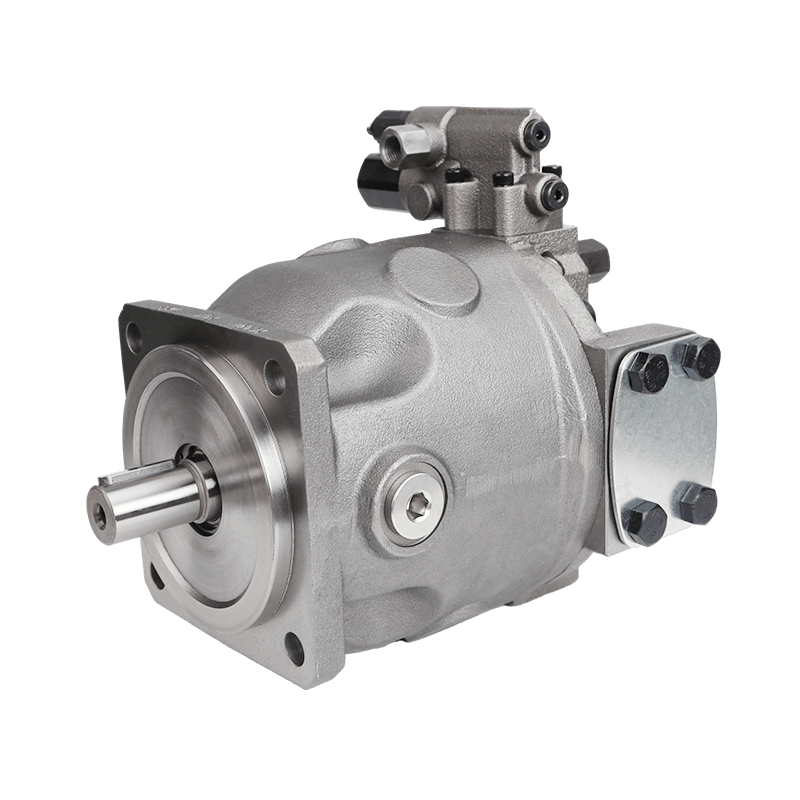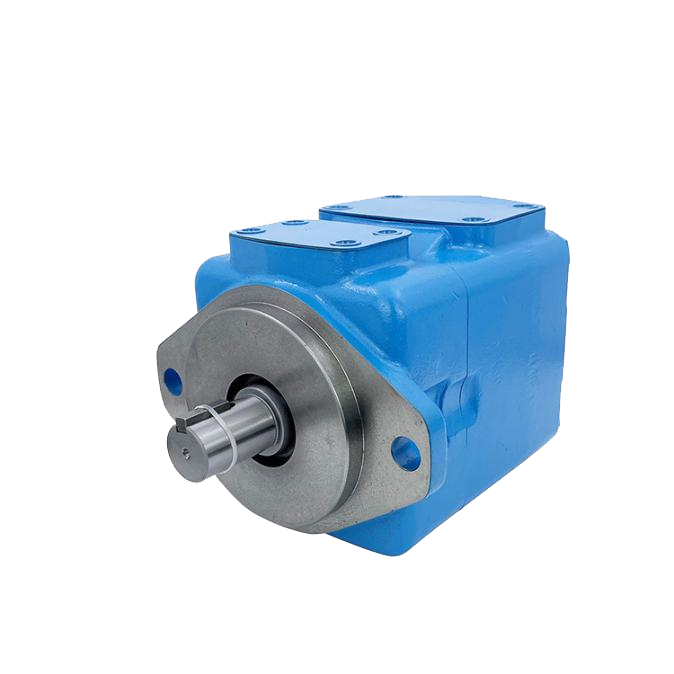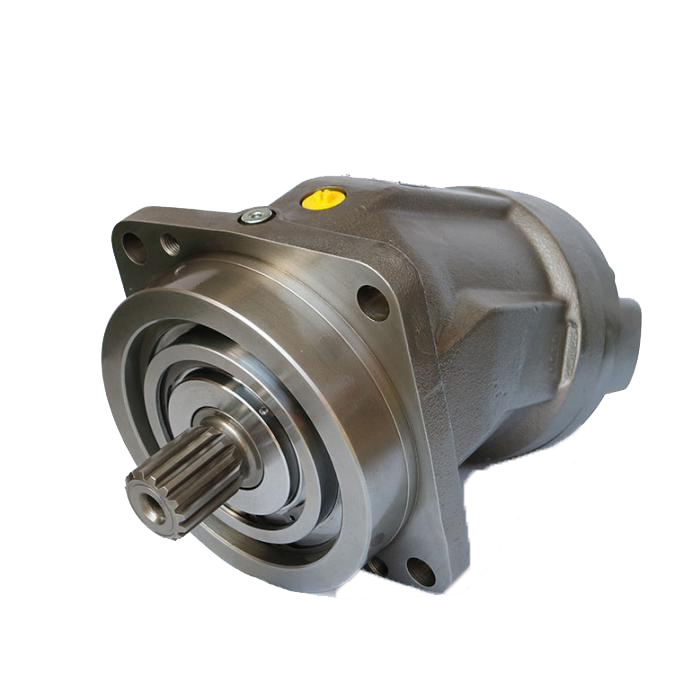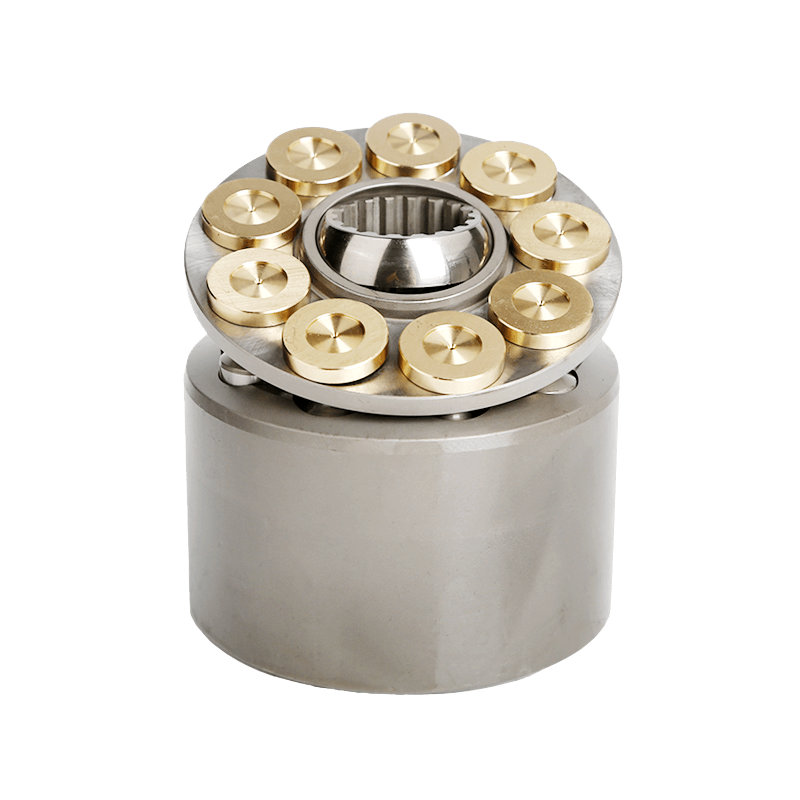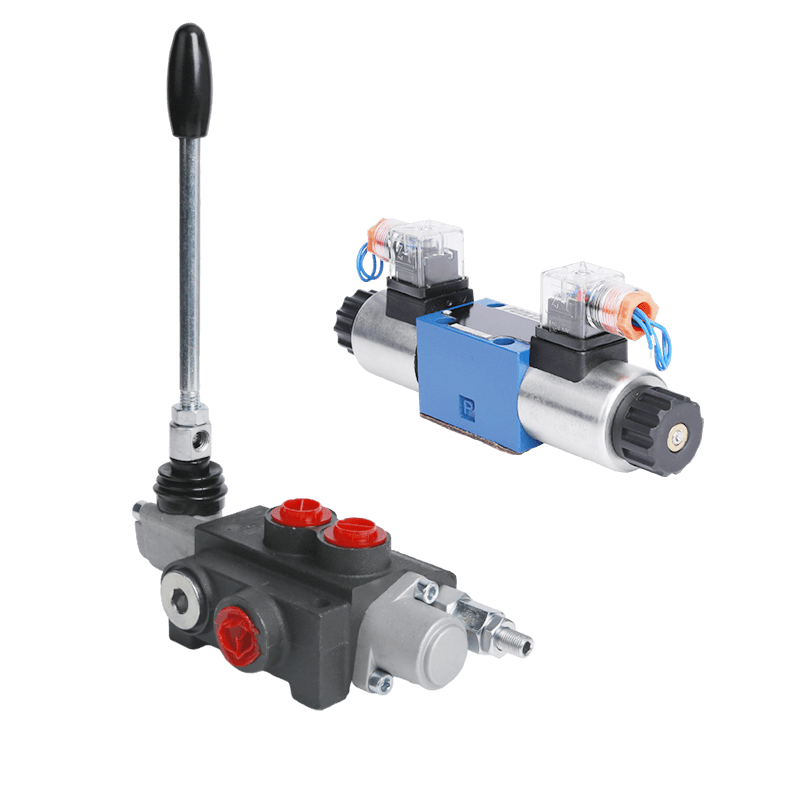The hydraulic pump plays a key role in hydraulic energy conversion, which changes the mechanical energy into hydraulic energy to move the fluid in the system for the movement of machinery. Hydraulic pumps are typically classified into three types: zahnradpumpen (simple, cost-effective, used for low-pressure applications), kolbenpumpen (high pressure and efficiency, suitable for heavy-duty tasks), and schaufelpumpen (balanced performance, used in medium-pressure systems). Each type is selected based on the application’s pressure and flow requirements.
Like any other mechanical system, hydraulic pumps can fail from one or several of many causes. Understanding the various failure modes and their remedies saves businesses from debilitating downtime and optimizes pump performance while extending equipment life.

The details of the most frequent hydraulic pump failure modes, their common root causes, and practical remedies are discussed in this blog. We are also going to emphasize how, among the numerous solutions, the POOCCA Hydraulic Pump stands out due to its strong position to gain trust regarding durability, efficiency, and precision in treading such challenges.
1. Contamination: The Silent Enemy
Causes of Contamination in Hydraulic Pumps
Contamination is one of the major reasons for hydraulic pump failure. When dirt, debris, or any form of particles gain intrusion into hydraulic fluid, then severe damage of gears, bearings, and seals inside the pump would result. With time, these things make operations inefficient, and even failure may happen with the pump itself.
Solution: Effective Filtration
A strong filtration system should help avoid contamination. Changing the oil filter and making inspections for whatever possible leak or contamination point in the system is important. Hydraulic fluid must be drained from cases of serious contamination and the system is to be flushed with new, clean fluid in order to avoid further damage. Extra measures are to be taken in order to protect hydraulic pumps in storage from exposure to dirt and debris in order to prevent re-contamination.
POOCCA Hydraulic Pumps are designed with high-quality filtration systems that minimize the risk of contamination. With these pumps, the system’s longevity is extended since their robust seals and filtration designs prevent dirt and debris from entering the hydraulic system.
2. Cavitation: The Pressure Killer
Causes of Cavitation
Cavitation occurs when the hydraulic system pressure becomes lower than the hydraulic fluid vapor pressure. In such a situation, the fluid vaporizes and forms bubbles that collapse with immense force when the pressure increases, hence causing damage to the components of the pump. The symptoms of cavitation commonly include increased noise from the pump, reduced pressure, and erratic operation of the pump.
Solution: Maintaining Proper Suction Conditions
Since the hydraulic system has to be correctly set up in respect to suction pressure and fluid level, cavitation should be avoided. Cleaning suction strainers periodically or checking for any leakage in the systems will also lead to the right performance. If necessary, review the pump speed of your selection regarding a larger pump so as to meet the applied pressure.
Pookka -Hydraulikpumpenlösung

Die axialen Kolbenpumpen von Poocca sind für ihre Präzision und Hochdruckfähigkeit bekannt und wurden daher für den Umgang mit sehr hohen Drücken ausgelegt. Bei den Pumpen von Poocca werden die mit Kavitation verbundenen Probleme aufgrund des fortschrittlichen Designs erheblich verringert, das sicherstellt, dass ein ordnungsgemäßes Gleichgewicht zwischen Saug und Druck ist.
3. Aeration: Air in the System
Causes of Aeration
Aeration Aeration is the entry of air into hydraulic fluid. Entrance of air through unsealed joints and leaks forms air bubbles in the system that collapse with terrific force in the pump. This causes pressure instability, noise, and wear of pump components. Whining or high-pitched noise from the pump usually accompanies aeration.
Lösung: Richtige Schaltungsgrundierung und Luftblutung
Aeration can be avoided, among other ways, by ensuring that the circuit is well primed before engaging in operation. Bleed off the trapped air in the system. The shaft seal should be checked for any leak that may allow air in and the inlet pipe should not be above the oil level to avoid sucking air inside the pump. Be sure that the air filter does not clog to avoid further aeration.
POOCCA’s Air-tight Technology
POOCCA hydraulic pumps boast the newest sealing technologies that minimize air intake into the system. With good seals and high cleanliness of hydraulic fluid, regularly, POOCCA can be assured that their pump will work reliably and smoothly without any risk related to aeration.
4. Overload and Over-Pressurization: The Silent Strain
Causes of Overload
A hydraulic pump will actually fail mechanically if it operates outside its capacity or runs under sustained high pressure. In the same way, operation at pressures higher than the rated pressure for the pump increases stress on the internal parts, accelerating wear and eventual failure.
Solution: Pressure Monitoring and Relief Valves
Die Betriebsbedingungen müssen eng überwacht werden, um Überlastung zu vermeiden, und neben der Installation von Druckentlastungsventilen, um eine Beschädigung des Systems zu verhindern. Wenn diese Systeme unter hohen Drücken über ihre Nenngrenze hinausgehen, werden die Systemkomponenten neu gestaltet, um solche Drücke zu reduzieren oder eine Pumpe mit größerer Kapazität zu installieren, die die Nachfragebelastung entsprechen kann.
POOCCA’s Smart Pressure Management
Die hydraulischen Pumpen in Pookka haben ein eingebaues Druckentlastungsventil, das den Druck automatisch durch Verhinderung von Überlastung reguliert, wodurch die Pumpe innerhalb der Grenze des sicheren Betriebs gehalten wird, was zu einer verringerten Verschleiß und einer zunehmenden Zuverlässigkeit des Systems führt.
5. Improper Lubrication: The Hidden Cause of Wear
Causes of Improper Lubrication
In hydraulic pumps, lubrication is very important to minimize friction and wear. A pump operating at a low oil level or with improper lubrication will have more friction, increased heat, and wear on moving parts; consequently, its service life is significantly shortened.
Solution: Check on lubrication regularly and choose appropriate oil.
The lubrication must be proper and of the correct level. Regularly check the oil level, using the right type of lubricant, and also ensure that its viscosity is appropriate for the ambient temperature and the operating conditions. Oil temperature is also something to be checked because very high temperatures take a toll on lubrication properties.
Superior Lubrication System by POOCCA
Dies hilft bei erfolgreichen Arbeiten unter verschiedenen Arbeitsbedingungen aufgrund fortschrittlicher Schmiersysteme. Außerdem haben Pookka-Pumpen überlegene Innenschmierkanäle überlegen, die in allen Bereichen der Maschinen eine glatte Hydraulikflüssigkeitskreislauf gewährleisten, um bessere Schmiermechanismen zur Reduzierung der Abrieb zu liefern.
6. Mechanische Ausfälle: Fehlausrichtung und Schädigung der Komponenten Ursachen für mechanische Probleme
Zu den mechanischen Problemen zählen eine Fehlausrichtung der Pumpe, abgenutzte oder schmutzige Teile und eine falsche Montage von Teilen. Fehlausrichtung der Pumpe und der Welle der Antriebsmaschine führt zu übermäßigen Verschleiß und Vibration und zu einer erheblichen Ineffizienz der Pumpe. Dichtungen, beschädigte oder lose Teile führen zu Leckagen und Ausfall der Pumpe.
Lösung: Periodische Inspektionen und Ausrichtungsprüfungen

It requires proper installation and alignment with the drive shaft to avoid mechanical failure. Occasional checking of all the parts for wear, cleaning of debris, and sealing to avoid leakages will make the pump durable. Also, the correct rotation of the pump in the specified direction is an important factor in this regard.
POOCCA’s High-Precision Engineering
Precision engineering by POOCCA in hydraulic pumps ensures that the risk of mechanical failure is at its minimum. Advanced alignment and assembly techniques allow for smooth operation in extremely harsh environments.
7. Extreme Temperatures: The Temperature Challenge
Causes of Temperature Extremes
Hydraulic pumps operating under extreme temperatures will be changing even the viscosity of the fluid that is poor for lubrication and could even deteriorate hydraulic oil. It can cause seizures or malfunction in the pump due to too high temperature resulting in failure in the system.
Solution: Temperature Regulation Systems
These require the installation of temperature monitoring and cooling mechanisms to operate within recommended temperatures. Sometimes it deals with applying alternative hydraulic fluids possessing increased thermal stability that do not overheat.
Temperature-resistant pumps by POOCCA
POOCCA has developed hydraulic pumps for high and low temperatures; they are the best alternative when it comes to extreme conditions. Advanced materials in use and cooling systems ensure that the pumps continue to work without tussles from their users even in very unfavorable conditions.
Future Failures Prevented: The Proactive Way to Maintenance

Preventive measures would include avoidance of hydraulic pump failure with good maintenance. In other words, scheduled maintenance, frequent checks of the system, and solving the problems when they are in their incipient stages will help avoid costly downtime for businesses and extend the hydraulic systems. Checks on hydraulic fluid, seals, and internal parts; timely changes of oil and filter-some such aspects that keep the hydraulic at an optimum performance level.
Above all, the design for durability and dependability in a POOCCA hydraulic pump means assurance to businesses. At POOCCAinnovation wird mit qualität kombiniert, um dieses unternehmen zu einem sicheren partner für unternehmen auf der suche nach effizienten leistungsstarken hydraulischen lösungen zu machen.

